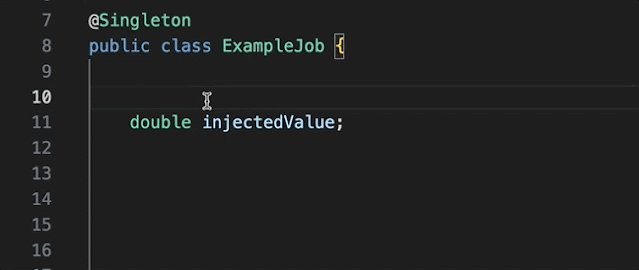The Java Virtual Machine (JVM) is a cornerstone of the Java programming language, pivotal in enabling its platform-independent capabilities. This comprehensive guide delves into the intricacies of the JVM, shedding light on its architecture, functionalities, and its role in modern software development.
Understanding the Java Virtual Machine
The Java Virtual Machine, or JVM, is a crucial component of the Java Runtime Environment (JRE). It abstracts the underlying hardware and operating system, allowing Java applications to run on any device equipped with the JRE. The JVM achieves this by converting Java bytecode into machine-specific instructions.
Architecture of the Java Virtual Machine
Class Loader Subsystem
The Class Loader Subsystem is responsible for loading class files into the JVM. It operates in three main phases:
- Loading: The JVM loads class files from the file system, network, or other sources.
- Linking: This phase involves verifying, preparing, and resolving classes.
- Verification: Ensures the bytecode adheres to the JVM's specifications.
- Preparation: Allocates memory for class variables and initializes them to default values.
- Resolution: Converts symbolic references into direct references.
- Initialization: Executes static initializers and the class's static blocks.
Runtime Data Areas
The JVM's runtime data areas are pivotal for executing Java applications. These include:
- Method Area: Stores class structures, including runtime constant pool, field and method data, and code for methods.
- Heap: The runtime data area from which memory for all class instances and arrays is allocated.
- Java Stacks: Each thread has a private JVM stack, created at the same time as the thread. A stack stores frames, holds local variables, and partial results.
- PC Register: Each JVM thread has its own Program Counter (PC) register. It holds the address of the currently executing JVM instruction.
- Native Method Stack: Contains all native methods used in the application.
Execution Engine
The execution engine interprets the bytecode. It consists of:
- Interpreter: Reads and executes bytecode instructions one by one.
- Just-In-Time (JIT) Compiler: Improves performance by compiling bytecode into native machine code at runtime.
- Garbage Collector (GC): Automates memory management by reclaiming memory used by objects no longer in use.
Java Native Interface (JNI)
JNI allows Java code running in the JVM to call and be called by native applications and libraries written in other languages like C or C++. This interface ensures that Java applications can leverage platform-specific capabilities and optimize performance-critical sections.
Key Features of the Java Virtual Machine
Platform Independence
The JVM allows Java to be a "write once, run anywhere" language. Java programs, compiled into bytecode, can run on any system with a compatible JVM, ensuring broad compatibility and flexibility.
Automatic Memory Management
The JVM includes an automatic garbage collector that manages memory allocation and deallocation, reducing memory leaks and programmer overhead associated with manual memory management.
Robust and Secure Execution
The JVM performs various runtime checks, which enhances the robustness and security of Java applications. Bytecode verification ensures that the code adheres to JVM specifications, preventing malicious code execution.
Thread Management
The JVM provides built-in support for multithreading at the language level. Java threads are managed by the JVM, which provides an efficient, scalable platform for concurrent applications.
Garbage Collection in the JVM
Garbage collection is a form of automatic memory management. The JVM’s garbage collector is responsible for identifying and disposing of objects that are no longer needed by the application. The JVM uses several algorithms for garbage collection, including:
- Serial Garbage Collector: Suitable for single-threaded environments.
- Parallel Garbage Collector: Uses multiple threads to manage heap space, ideal for applications running on multi-core processors.
- CMS (Concurrent Mark-Sweep) Garbage Collector: Designed for applications that require shorter garbage collection pauses.
- G1 (Garbage-First) Garbage Collector: Balances high throughput with low pause times, suitable for large applications.
Performance Optimization Techniques
Just-In-Time Compilation
The JIT compiler plays a vital role in optimizing performance. By compiling bytecode into native machine code at runtime, the JIT compiler reduces the execution time significantly.
Escape Analysis
Escape analysis determines the scope of object usage. If an object does not escape a method or thread, the JVM can allocate it on the stack instead of the heap, reducing garbage collection overhead.
Inline Expansion
This optimization technique involves replacing a method call with the method body itself. Inline expansion reduces the overhead associated with method invocation and can significantly improve execution speed.
Adaptive Optimization
The JVM monitors application performance and adapts its optimization strategies dynamically. This involves collecting runtime statistics and using them to make informed decisions about when and how to optimize code.
The Future of the Java Virtual Machine
The JVM continues to evolve, integrating new features and optimizations to meet the demands of modern software development. Upcoming enhancements include:
- Project Loom: Aiming to simplify concurrent programming with lightweight, user-mode threads (fibers).
- Project Valhalla: Introducing value types to improve memory layout and reduce heap fragmentation.
- Project Panama: Enhancing the connection between Java and native code to improve performance and flexibility.
Conclusion
The Java Virtual Machine is a critical component of the Java ecosystem, providing a platform-independent execution environment with robust security, automatic memory management, and high performance. As it evolves, the JVM will continue to support the development of scalable, efficient, and secure applications.

















